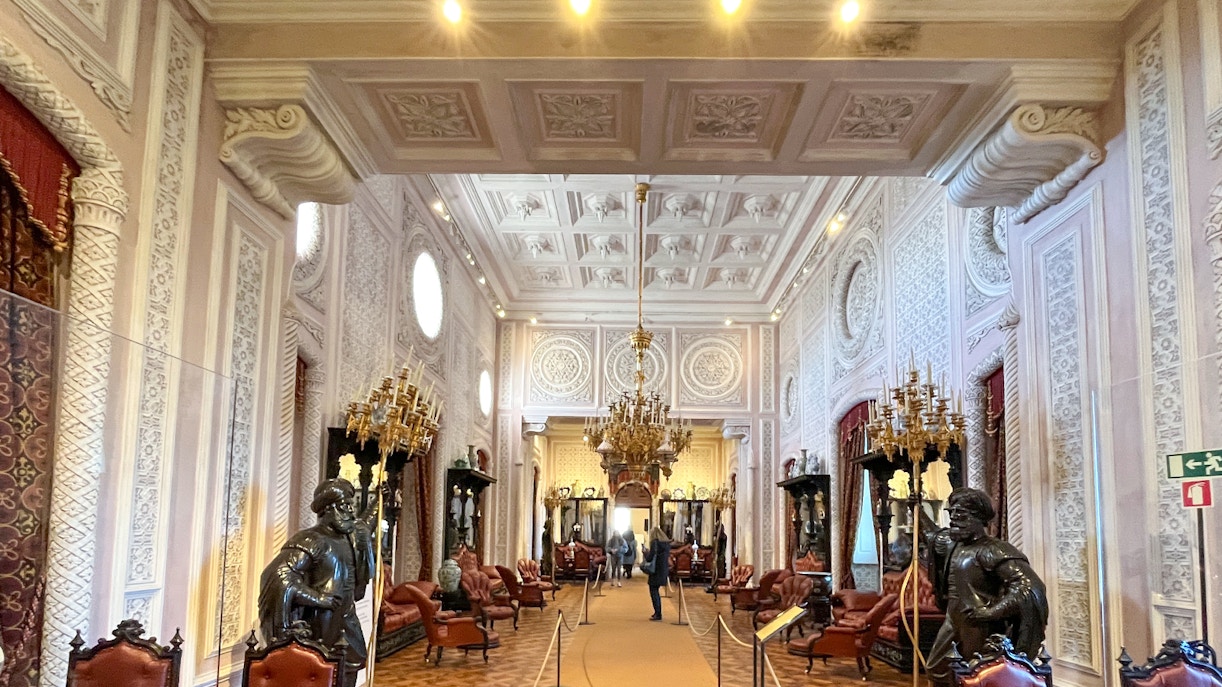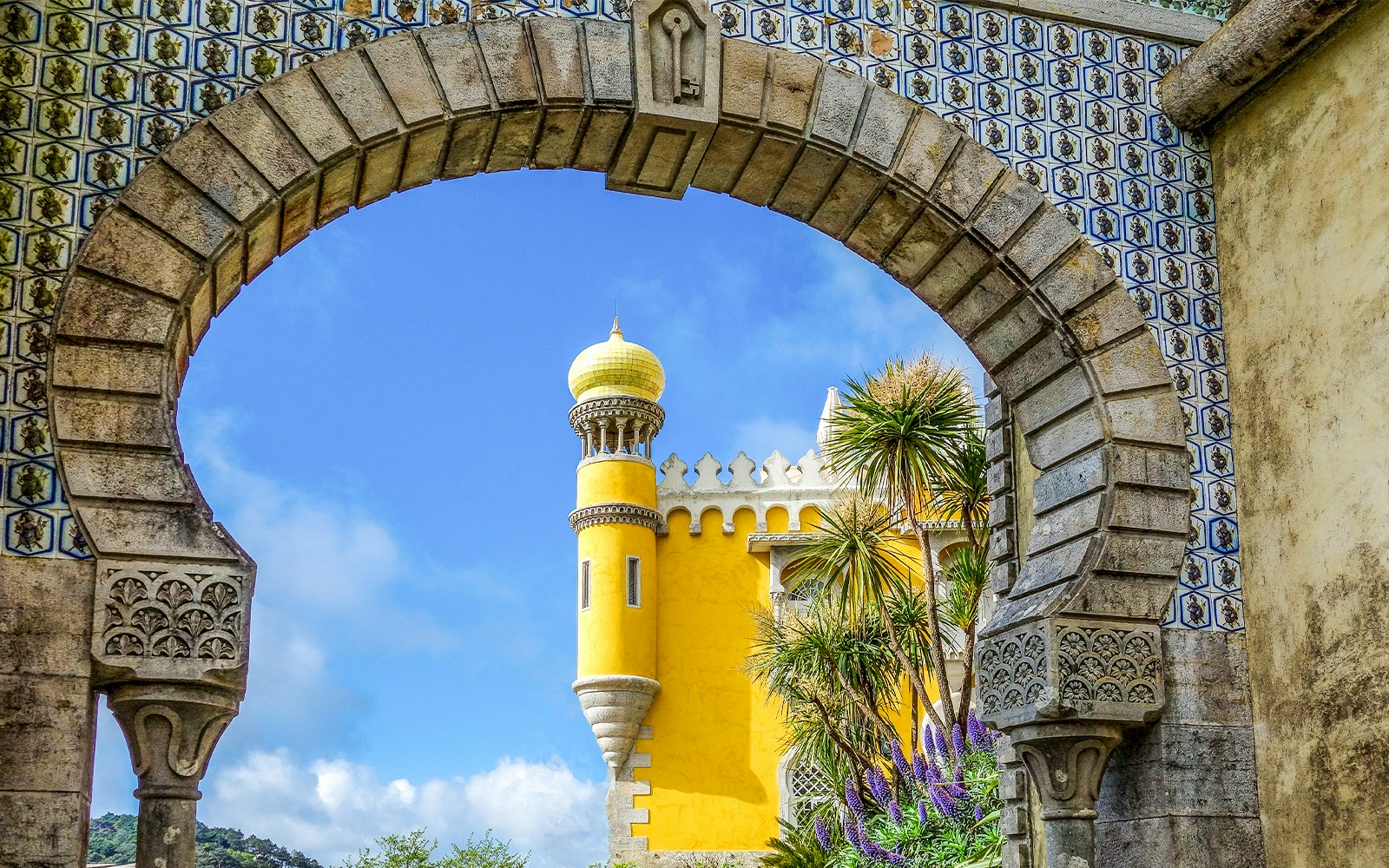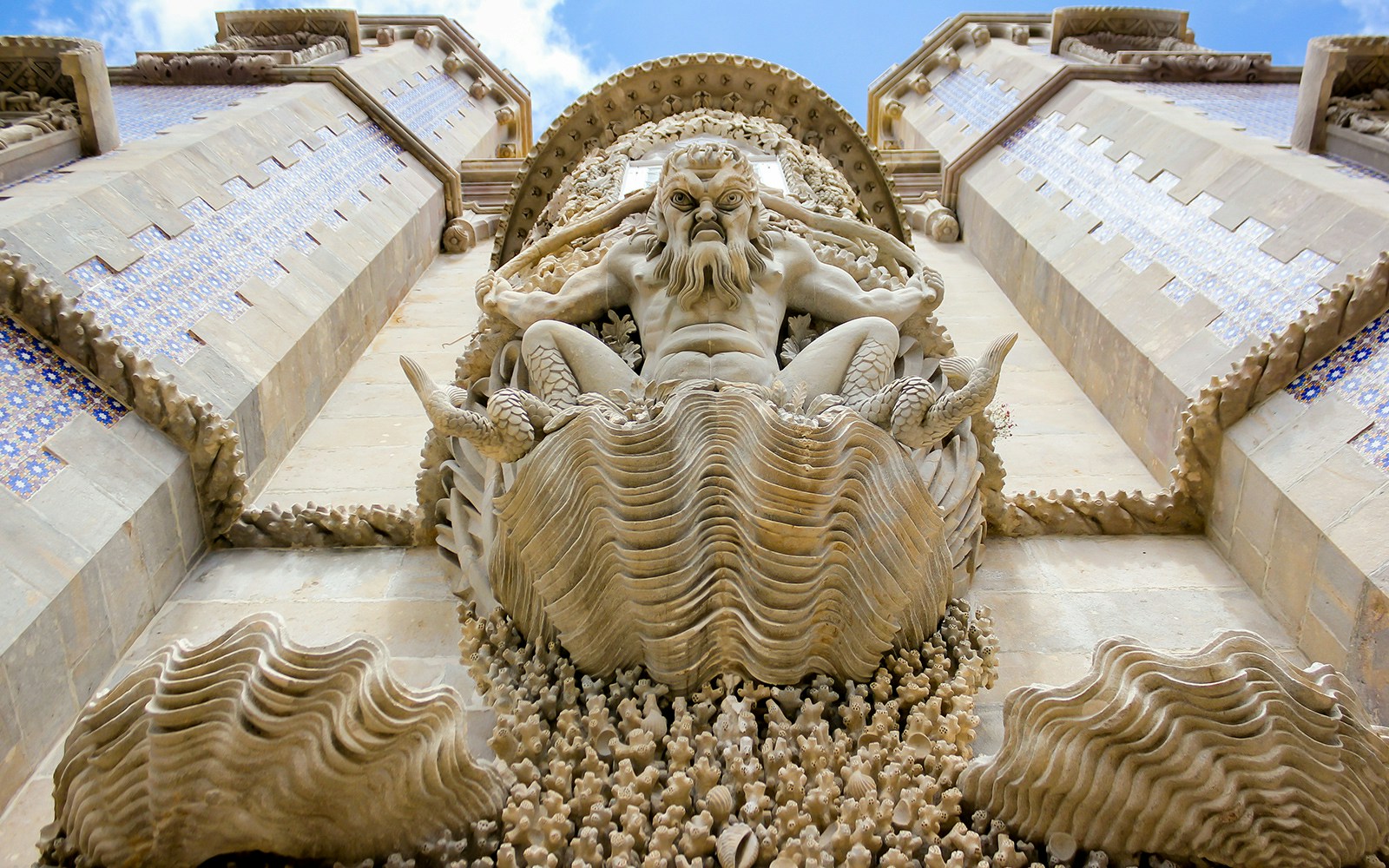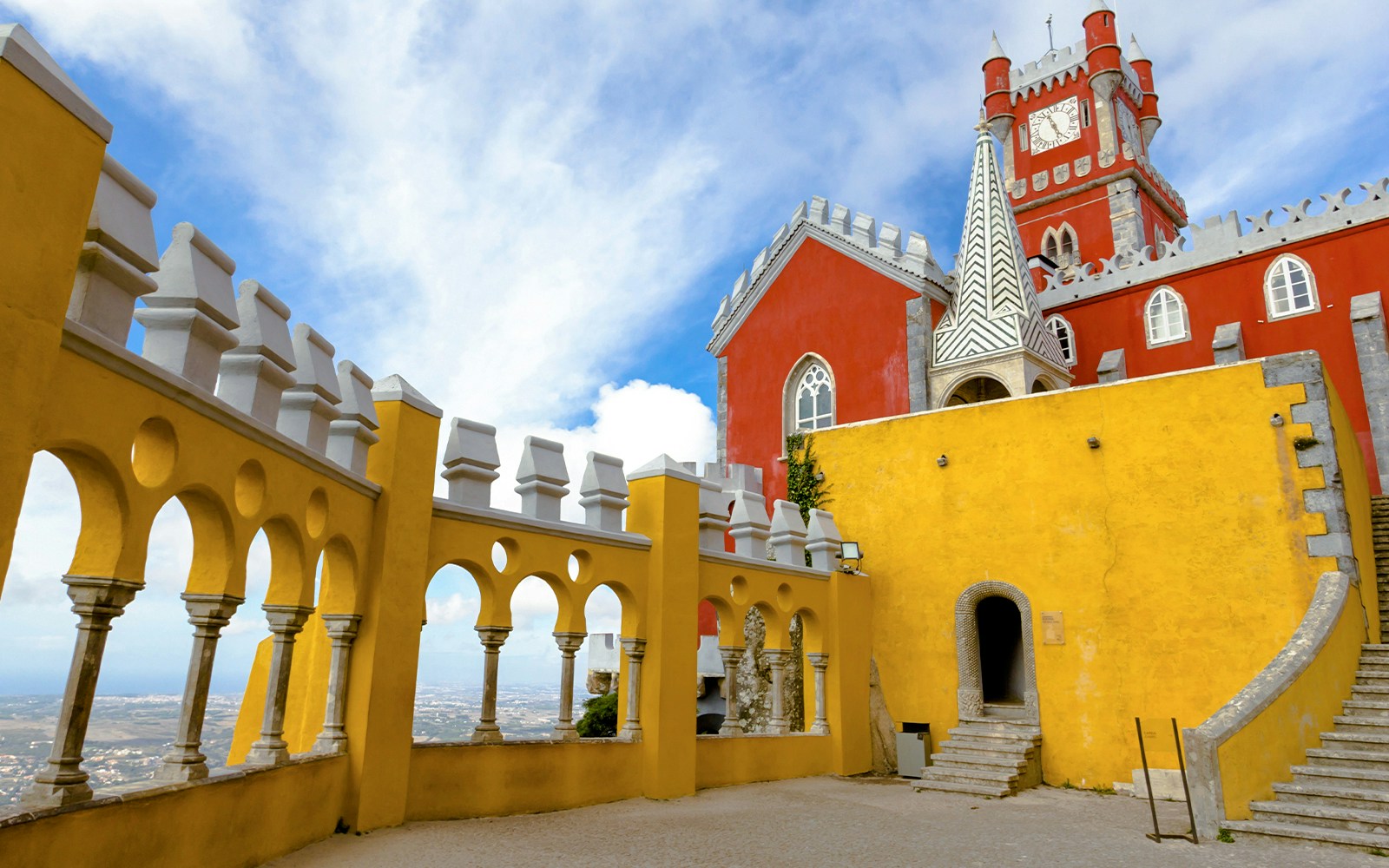- In 1995, the Pena Palace Sintra was classified as a World Heritage Site by UNESCO.
- The Pena Palace is listed among one of the Seven Wonders of Portugal.
- Witness a unique blend of architectural styles from the Neo-Gothic to Neo-Manueline and even the Neo-Moorish which became prominent in the 1840s.
- Pena Palace is known for its colourful terraces and decorative battlements that cannot be missed.
- The interiors of Pena Palace are richly decorated with tiles presenting amazing stucco sand Trompe-loeil painted walls.
Things to Do at Pena Palace
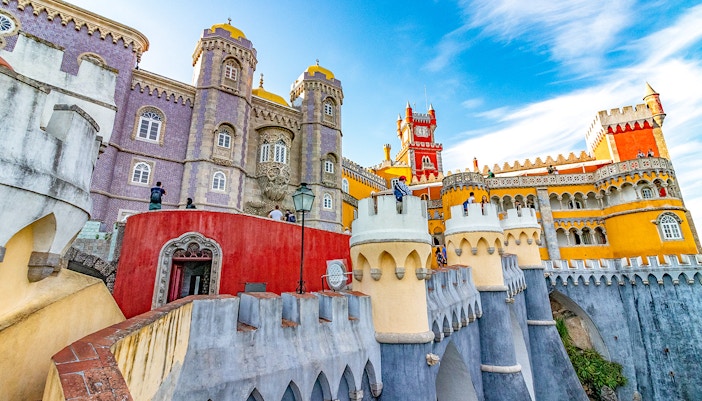
Enchanting Architecture
Pena Palace's extraordinary architecture is a captivating fusion of vibrant colours, intricate stonework, and a blend of Romantic, Gothic, and Moorish styles. The fairy-tale-like appearance of its turrets and domes, coupled with the ornate detailing, makes it an architectural marvel.
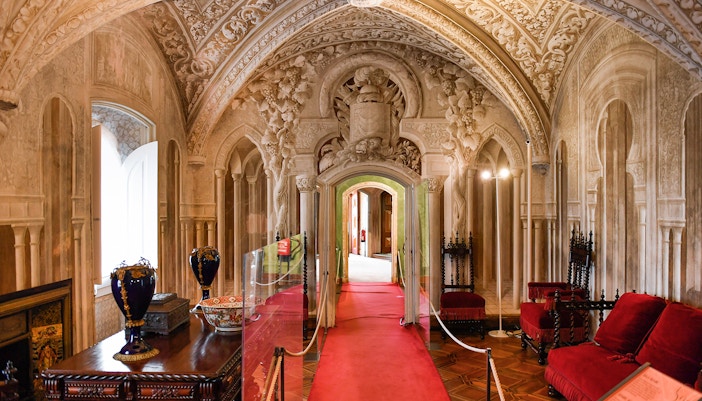
Interior Splendour
Step inside Pena Palace to discover lavishly decorated rooms adorned with opulent furnishings and intricate tilework. The extravagant ambience reflects the eclectic taste of the Portuguese royal family, offering visitors a glimpse into the opulence and grandeur of the 19th-century monarchy.
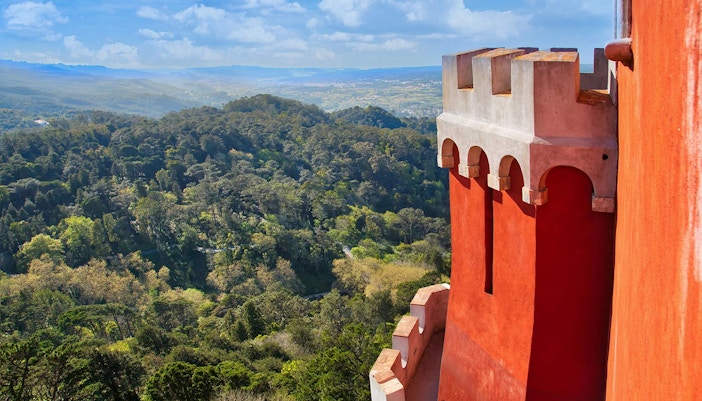
Breathtaking Views
Perched at an elevation of 500 meters, Pena Palace offers sweeping panoramic views of Sintra and its idyllic surroundings. The sight of misty hills, lush forests, and the distant Atlantic Ocean creates a mesmerizing backdrop for the palace, making it a photographer's paradise.
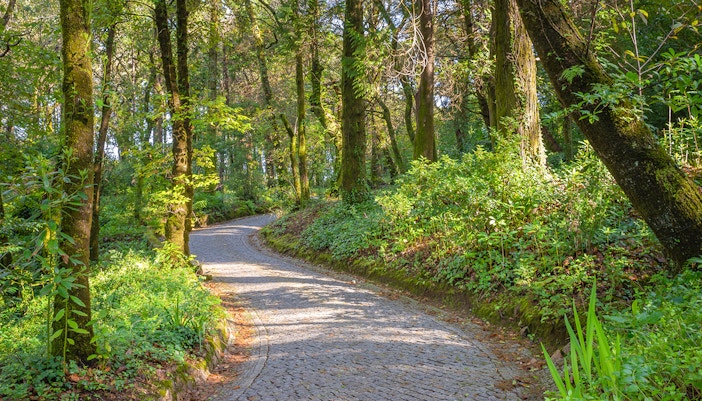
Parks and Gardens
The palace is nestled within a vast park, featuring diverse plant species from around the world. Wander through the enchanting gardens, complete with winding paths, tranquil lakes, and hidden grottos, where nature and man-made beauty harmoniously converge.

The High Cross Terrace
The High Cross Terrace presents a picture-perfect spot to marvel at the palace's colourful facade and the stunning landscape below. Visitors can bask in the beauty of the architecture while taking in the fresh mountain air.
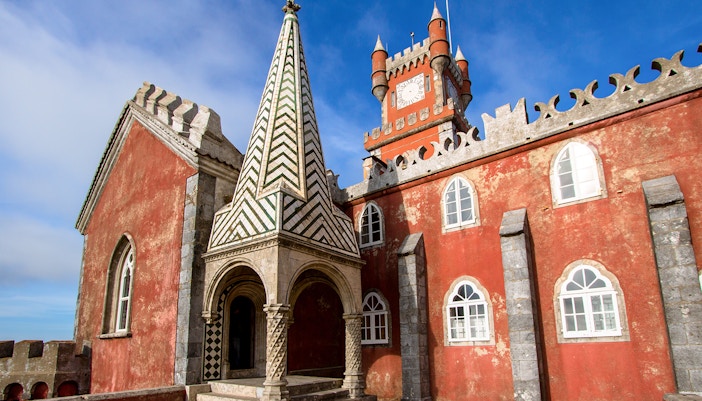
History and Legends
Pena Palace is steeped in history and legends, which guides and informational exhibits skillfully narrate. The tales of Portuguese royalty and the palace's transformation from a ruined monastery into a royal retreat add depth and intrigue to the visitor experience.
